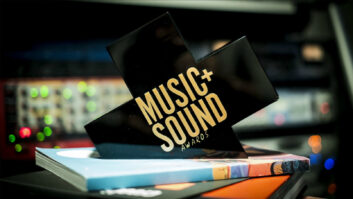Max Graham has quietly spent the last several years as Canada’s premier ambassador of dance music. Often compared to other progressive house acts like Underworld and Sasha and Digweed, Graham has been enjoying residencies at countless north-of-the-border and European clubs. For this reason, he was recently tapped to compile and mix Transport 4, the fourth installment of the highly successful compilation series that helped launch the Stateside careers of Paul Oakenfeld, Dave Ralph and Sandra Collins. Now, as Graham is poised to become the flavour du jour on the U.S. DJ scene, he’s taking the logical step from DJ to producer, following much the same path taken by BT and Paul Van Dyk.
Working out of his Montreal home, Graham has assembled a modest studio setup and has begun his first album of original material. “I realized that as a DJ, the only way to go international with my career and to grow beyond the Canadian and North American markets was to produce,” he explains. “That’s the only way to really get noticed at this point.
“I rented a loft in Montreal that was big enough for a proper studio space,” he continues. “It’s really a very rough setup, but it seems to be working very well for me from the reactions and the reviews that I’ve gotten. My whole thing is to show that you can make real quality with a shoestring budget.”
His studio is based around a PC running Cubase and Sound Forge through a simple Echo Gina interface. Graham also uses a modest Behringer 24-channel mixer. His only two outboard synths are an Access Virus and a Roland JV-2080. And, he has recently upgraded to Mackie HR24 monitors.
“When I’m writing, I’ll usually start out with a one-bar drum loop,” he continues. “And I’ll usually pull up a sort of ‘elctro’ loop or breaks in Sound Forge and pitch them to match the loop. And then start adding a little bit of percussion and putting a bit of delay on it and getting a sort of a rhythm going. And then I’ll usually add a bass line. And out of that, I’ll start to hear some melodies coming out. Then I’ll add some strings from the JV-2080. All I own are the 2080 and the Virus. The 2080 is used for all my strings and top-end sounds and the Virus for all my bass lines. I’m not really using a desk anymore. Everything is pretty much inside the PC. I’m mixing everything inside the PC and using loads of plug-ins.
“Then, once I get something that sounds kind of chunky, like a loop, I’ll start to spread it out and arrange it. I’ll usually build the arrangement up to a point where it needs a turning point in the song, either a breakdown or a sound comes in that is what the song is all about. And it’s usually like a one- or two-day process building up to that. Then I have to find something that’s going to make that song stand out, like a vocal or a big chord progression or a melody. And that can take anywhere from an hour to two or three days to come up with.”
As a DJ who tours constantly around the world, Graham has begun to bring a similarly outfitted laptop on the road, allowing him to compose and test out new material. “I travel with a laptop with Cubase and Sound Forge,” he says. “I’ve been getting more involved in laptop-based production while I’m touring. It’s really hard because I don’t use an engineer, and a lot of DJs have an engineer who stays home. I try and balance the two out and be home two or three days a week and get a mix finished and get something out there and be able to tour as a DJ. I don’t really want to rely on my name as a DJ selling someone else’s engineering work, which I find is something that happens a lot in this business.
“I’m also trying to think of ways of incorporating the laptop in the live show. I burn a lot of CD-Rs from the PC and play them out that night. I’ll bring out drum tracks and bass lines and see how they work. Sometimes I’ll bring like a four-minute drum track just to hear how the kicks relate to the percussion out in the club. If I come up with a sub-bass kick that I’m really into, I’ll just drop it underneath another track in the club and see how it sounds and go back to the studio and rework it.”
Currently, Graham is making the rounds on the international DJ circuit. Transport 4 was released last May, and his first album is slated for release early next year on Kinetic Records. For samples of Graham’s recent work, in RealAudio format, visit www.maxgraham.com.
Robert Hanson, Mix‘s editorial assistant, is a musician/producer living in San Francisco.







